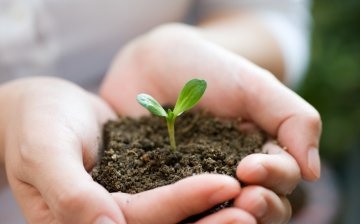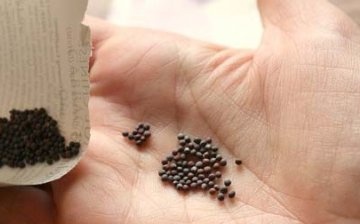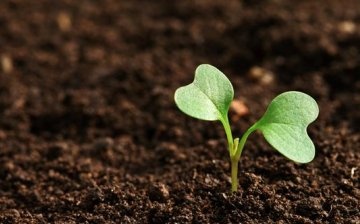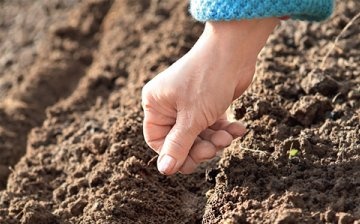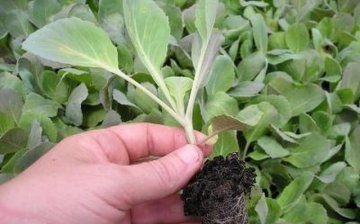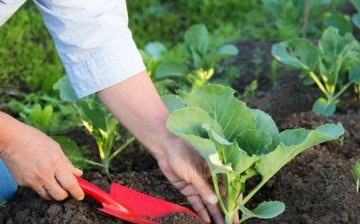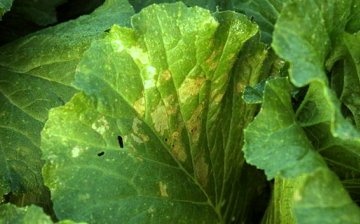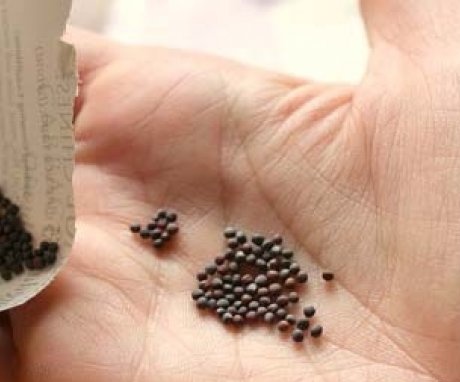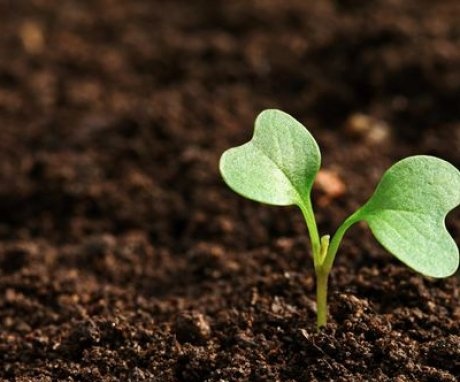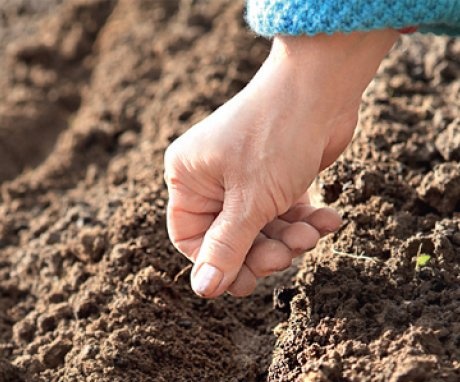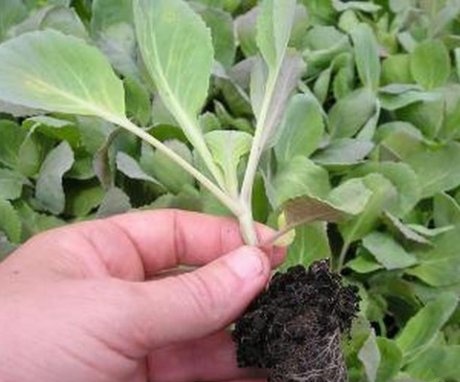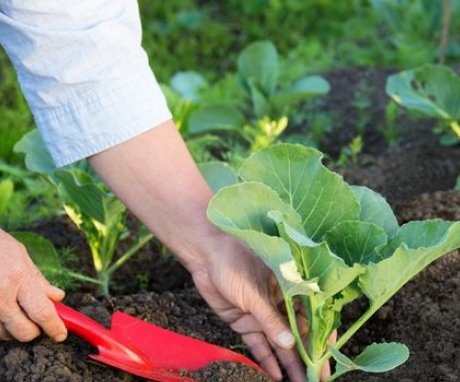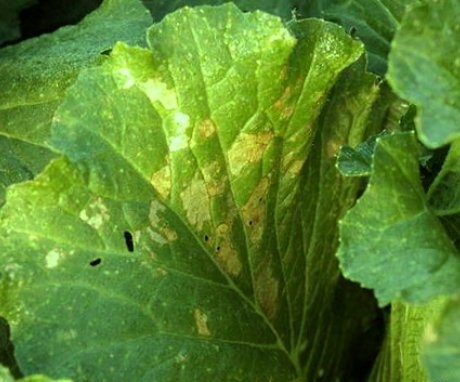Expert advice: how to grow cabbage seedlings at home
Cabbage is the real queen of vegetable gardens: it is a favorite vegetable with a rich set of nutrients and is the basis of a number of delicious and healthy dishes. Growing it is not so difficult, however, in order to get a rich harvest on your site, you need to know how to grow cabbage for seedlings at home.
Experienced gardeners have dozens of secrets that guarantee a good result at the end of the season. In such a case, there are no trifles, and first of all, you need to pay attention to several important points.
Content:
- Sowing timing and seed selection
- Soil preparation for seedlings and seed treatment
- Planting cabbage seeds for seedlings
- Conditions for good growth of seedlings
- Correct feeding of cabbage seedlings
- Fighting Common Cabbage Pests
Sowing timing and seed selection
Correctly selected cabbage variety - an important component of success. The timing of planting will depend on what kind of cabbage you want to plant: early maturing or late maturing. The first option is more suitable for salads and other summer dishes, the second is more suitable for salting and long-term winter storage.
Early cabbage varieties require at least 40-50 days before planting, medium ones - about 30 days, late ones - up to 45 days.
Knowing the characteristics of each variety, you can easily calculate when it is most profitable to start sowing:
- Early maturing varieties land in mid-March. First, they are placed in boxes that are placed on the windowsill. It is more profitable to stretch the planting for several days, then the crop can be harvested at a short interval.
- Mid-season cabbage varieties are planted for seedlings approximately in the third decade of April. Until the beginning of May, the crops will be in boxes, after which they need to be cut down, after which you can keep the plants in a cold nursery.
- Late-ripening varieties are planted, like early ones, in late March or early April. However, for them, picking is carried out only after the plants have at least 3-4 true leaves. It is customary to plant such cabbage more rarely than other varieties, then you will not have to carry out an early pick. The grown cabbage is also subsequently transplanted into a cold nursery.
For seedlings the highest quality seeds are selected, this is the key to maximum germination. It is best to purchase seed in specialized stores, while it is better to immediately choose seeds of proven brands.
New varieties are interesting to every summer resident, but many of them may turn out to be unsuitable for the climate in this region or too capricious.
Soil preparation for seedlings and seed treatment
The next important condition for a good harvest is correctly selected soil... Cabbage prefers nutrient-rich neutral soils. For seedlings, you can purchase a ready-made soil mixture. The packages indicate all the necessary information about the composition and required fertilizers, as well as about features of agricultural technology... But you can also prepare the soil yourself.
The optimal soil for growing cabbage will be:
- A mixture of humus and sod land, taken in equal proportions.
- As a fertilizer, you can use wood ash: it is not only a source of useful trace elements, but also an antiseptic that will prevent various diseases.
- Some gardeners replace humus with peat, but this can provoke a disease of seedlings with a black leg.
- It is recommended to ignite the prepared soil mixture on a fire or spill it with a 1% solution of potassium permanganate: this is an additional protection against pathogenic bacteria.
Seeds also require preliminary preparation before planting. They are placed in a gauze bag, which is dipped into a jar of warm water. The seeds are kept in water for about 20 minutes, after which they are taken out and laid out on a flat surface, for example, on a saucer. The seeds are covered and placed on the bottom shelf of the refrigerator for 12 hours. This operation contributes to a significant increase in germination.
To further strengthen the seedlings, the seeds can be pre-soaked in a nutrient solution.
To do this, you can take the Ideal fertilizer: a teaspoon of the amplifier is dissolved in a liter of water, after which the seeds are placed in the solution for 20 minutes. After that, they need to be rinsed and dried. To protect against microorganisms, hay can also be treated with special agents.
Planting cabbage seeds for seedlings
To plant cabbage you need pick up shallow containers with a height of 4-5 cm. These can be both wooden boxes and plastic containers. For planting, you need to make grooves up to 1 cm deep, the distance between the seeds should be about 2 cm. Immediately after planting, the soil must be thoroughly watered: the seeds need a lot of water to germinate. At the same time, it is not required to water the ground more before the emergence of seedlings, otherwise the risk of a "black leg" disease increases.
The seeds are covered with soil, and after watering, the boxes are covered with foil or other transparent material to create a mini-greenhouse. Seedlings need to be ventilated sometimes, waiting for the first shoots usually takes about three days.
When the seeds begin to germinate, the seedlings must be transferred to a cool place, the temperature should not exceed 20 degrees. Otherwise, the plantings will grow too quickly and turn out to be weak and thin.
The first time the transplant is carried out in two weeks: grown seedlings are transplanted at a distance of 3 cm from each other, you can transplant them into separate pots. The second transplant is carried out after another half a month: it will be convenient to use peat cups for this ale, which can then be transferred to open ground.
If there is no desire and ability to tinker with the transplant, you can immediately plant the seeds in separate pots, each seedling requires about 5 square meters. see spaces. Such plants will be more robust, since their root system was not injured during transplantation.
Conditions for good growth of seedlings
It is not enough to properly plant seedlings in boxes and pots, you need to provide them with good conditions for growth. Experienced gardeners have identified several patterns that will contribute to a good harvest in the future:
- Correct lighting mode. Because the cabbage is planted in springwhen the daylight hours are not yet very long, additional lighting can be provided for good growth. Extending daylight hours with a fluorescent lamp to 12-15 hours will enhance growth and achieve a good result.
- Growing seedlings require proper watering. The earthen lump should not dry out, it is watered often enough. To avoid root decay, the soil needs to be loosened frequently.
- Compliance with the temperature regime. Lowering the temperature in the room is useful only for white cabbage, the optimal condition for normal growth will be about +17 degrees, and at night the temperature can still be lowered.At the same time, cauliflower is more thermophilic: it requires a temperature of at least 25 degrees for good growth.
- Hardening of seedlings. 10 days before transplanting into open ground, planting must be prepared for a change in conditions, and it is important to do this gradually. In the first few days, it is enough to open the window for a while so that the plants get used to the outside temperature. On the following days, boxes with seedlings are taken out to the balcony or veranda. To prevent the plant from being burned by direct sunlight, at first it is slightly shaded with gauze.
These conditions allow the seedlings to grow optimally and they will be prepared to be moved outdoors.
Correct feeding of cabbage seedlings
Young plants need additional nutrition: for successful growth, they need a full set of trace elements that will help provide the right fertilizers.
Top dressing is carried out several times, it is designed to help plants adapt to changing growing conditions:
- The first time you need to feed young cabbage seedlings is already 7-9 days after the pick. For a liter of water, you need to take 2 grams of ammonium nitrate and potash fertilizer, as well as superphosphate in an amount of 4 grams. A liter of fertilizer solution is consumed for about 60 plants, so it is important to avoid excessive amounts. So that the roots of the plants do not suffer, they are first watered, and only then fertilizers are applied to the soil.
- The second feeding is carried out after 2 weeks. The composition of fertilizers for the nutrient solution will not change, but you need to double the amount. Also, plants are first watered, then a nutrient solution is added to the soil. If yellowing of seedlings is observed, they can be helped by introducing a weak (concentration of 1:10) slurry solution into the soil.
- The third feeding is carried out just before planting the seedlings in open ground. To improve survival in water, you need to dissolve 8 grams of potassium fertilizers, 5 grams of superphosphate and 3 grams of ammonium nitrate. Such top dressing can be replaced by the introduction of a ready-made complex fertilizer.
Top dressing stimulates growth, so it must be carried out. Stronger seedlings will later form heads of cabbage faster, and they will be larger.
Fighting Common Cabbage Pests
Cabbage seedlings are threatened by several common diseases: blackleg and other types of root rot, in addition, young plants often suffer from cruciferous flea infestations.
The fight against pathogenic microbes is carried out using a drug called trichodermin. Application according to the instructions is safe, it is an environmentally friendly protection of cabbage from damage. Trichodermin is introduced into the soil before picking. Requires 1 gram of the preparation for 1 seedling.
Another remedy for fighting pathogenic bacteria is Rhizoplan.
1 gram of this drug is diluted in 100 grams of water, after which the solution can be watered or sprayed on plants. Intavir is used to combat cruciferous flea and other types of garden parasites.
These are the basic rules for growing cabbage seedlings, which in the future will help you get a good harvest and please yourself with the most delicious and juicy cabbage. The rules apply to both early-maturing and late-ripening varieties, everyone will be able to prepare high-quality seedlings for planting on the site. Cabbage - healthy and delicious vegetable, which is worth all the costs invested in it.
More information can be found in the video.



